I have a dataset that has two categorical variables, viz., Year and Category and two continuous variables TotalSales and AverageCount.
Year Category TotalSales AverageCount
1 2013 Beverages 102074.29 22190.06
2 2013 Condiments 55277.56 14173.73
3 2013 Confections 36415.75 12138.58
4 2013 Dairy Products 30337.39 24400.00
5 2013 Seafood 53019.98 27905.25
6 2014 Beverages 81338.06 35400.00
7 2014 Condiments 55948.82 19981.72
8 2014 Confections 44478.36 24710.00
9 2014 Dairy Products 84412.36 32466.00
10 2014 Seafood 65544.19 14565.37
In MS Excel, we can happily get a pivot-plot for the same table, with Year and Category as AXIS, TotalSales and AverageCount as sigma values.
Using R, how do I draw such a graph as shown in the image, where the categorical variables are shown as multiple layers in the same graph?

P.S. One option that I could see is, by splitting the data frame into two separate dataframes (One for year 2013 and another for year 2014 in our case) and draw two graphs on one single plot, arranged in multiple rows to get the same effect. But is there any way to draw it as shown above?
Sample data used above
dat <- structure(list(Year = c(2013L, 2013L, 2013L, 2013L, 2013L, 2014L,
2014L, 2014L, 2014L, 2014L), Category = structure(c(1L, 2L, 3L,
4L, 5L, 1L, 2L, 3L, 4L, 5L), .Label = c("Beverages", "Condiments",
"Confections", "Dairy Products", "Seafood"), class = "factor"),
TotalSales = c(102074.29, 55277.56, 36415.75, 30337.39, 53019.98,
81338.06, 55948.82, 44478.36, 84412.36, 65544.19), AverageCount = c(22190.06,
14173.73, 12138.58, 24400, 27905.25, 35400, 19981.72, 24710,
32466, 14565.37)), .Names = c("Year", "Category", "TotalSales",
"AverageCount"), class = "data.frame", row.names = c(NA, -10L
)
